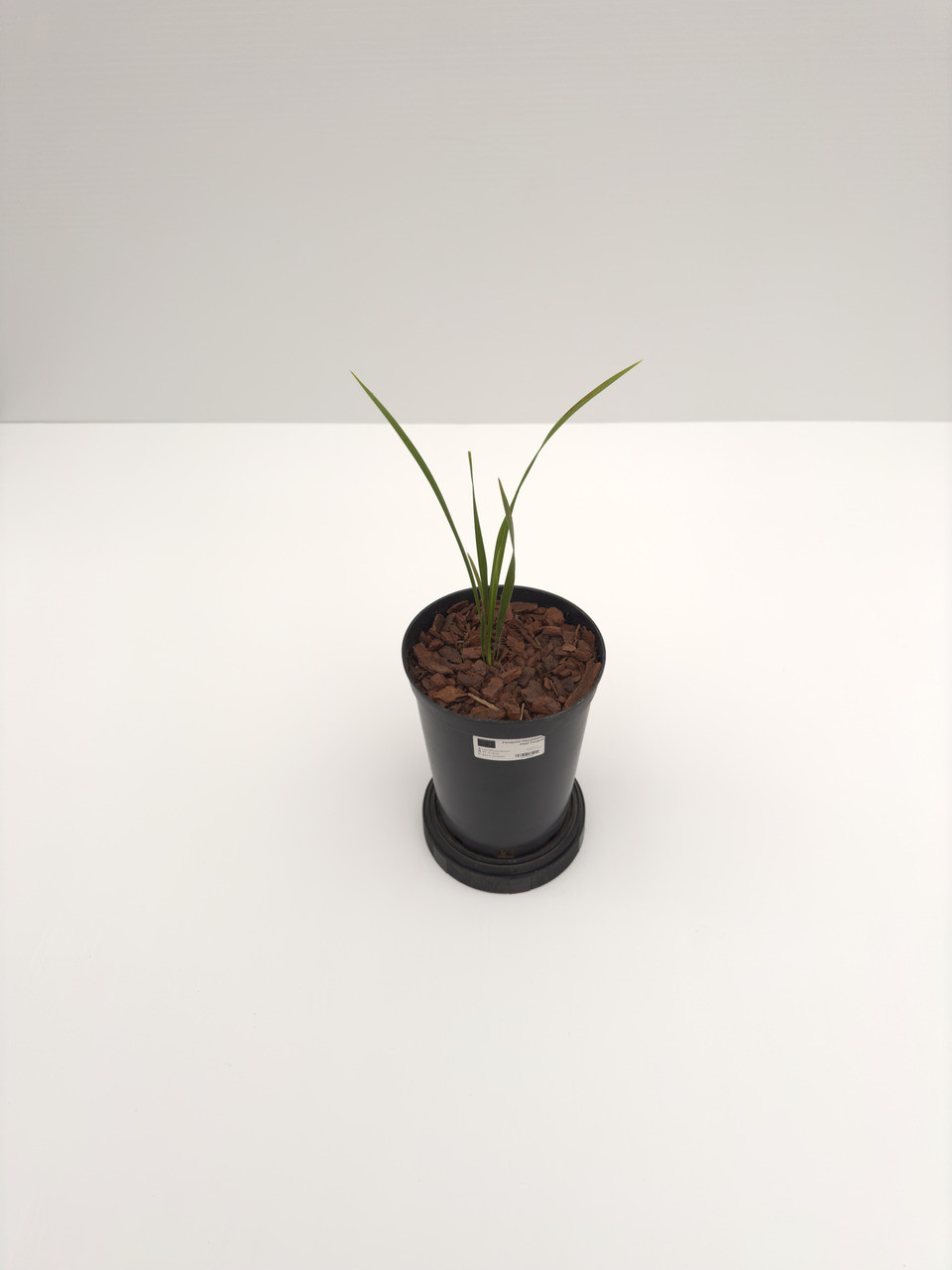Product Description
Habitat and Distribution
Bahamas, Cuba, Florida, Haiti, Leeward Is., and Puerto Rico. Widespread and common in the Caribbean region, Leucothrinax morrisii occurs across a range of habitats in Florida, the Greater Antilles, and the western Lesser Antilles. (C.E. Lewis and S. Zona. 2008)/Palmweb.
Description
Leucothrinax morrisii is a palmate-leaved palm with a solitary brown or grey trunk 1–11 metres (3–36 ft) tall and 5–35 centimetres (2–14 in) in diameter. Leaves are pale blue-green or yellow-green, whitish on the undersides. Petioles are 27–84 cm (0.9–2.8 ft) long with split petioles. The leaflets are 33–75 cm (1.1–2.5 ft) long and 2.3–4.8 cm (1–2 in) wide. The inflorescences extend beyond the leaves and are 55–100 cm (1.8–3.3 ft) long. The fruit are white, and turn yellow as they mature.
Solitary, unarmed, hermaphroditic palm to 11m tall. Stems to 35 cm in diameter. Leaves palmate, induplicate. Leaves glaucous adaxially; adaxial hastula silky upon leaf emergence (but pubescence caducous); leaf blade composed entirely of palisade cells; flowers sessile or subsessile Petioles split basally with net-like fibers, elongate, usually longer than the leaf blade. Abaxial surfaces of petiole and leaf blade covered with whitish waxy scales. Hastula and inflorescence bracts covered with silky, white caducous scales. Inflorescences arching, exceeding the leaves. Flowers sessile or borne on very short pedicels less than 1 mm in length. Fruits white, globose. Endosperm homogeneous, embryo lateral. Editing by edric.
Culture
Cold Hardiness Zon: 9b
Comments and Curiosities
Etymology: Specific epithet honors Sir Daniel Morris, the early 20th century assistant director at the Royal Botanic Gardens, Kew.
Leucothrinax morrisii is one of the most familiar cultivated palms of the Caribbean region and is also found in tropical gardens and conservatories worldwide. Its status as a distinct, monotypic genus had been, until now, unrecognized, as it shares many visible features with Thrinax excelsa, T. parviflora and T. radiata. Using molecular tools that were unavailable to earlier taxonomists, we were able to show a clear distinction between Leucothrinax and related palms. (C.E. Lewis and S. Zona. 2008)/Palmweb.
Slow growing, this mid-sized palm has a slender, smooth trunk and circular, fan-shaped leaves with silvery undersides, arranged in a dense crown. It is native to the Florida Keys and much of the Carribean region, where it grows in open woodlands and coastal areas. It will thrive in any open situation in subtropical and tropical climates and prefers a well drained, calcareous soil. (RPS.com)
Conservation: It has a conservation status of “least concern” (Zona et al. 2007) under the World Conservation Union criteria (IUCN 2006). Nevertheless, it represents unexpected diversity in the Caribbean palm flora and suggests that further phylogenetic research may uncover additional surprises. This research must be done quickly, as many Caribbean palms are in rapid decline, along with the threatened areas they inhabit (Zona et al. 2007). (C.E. Lewis and S. Zona. 2008)/Palmweb.













